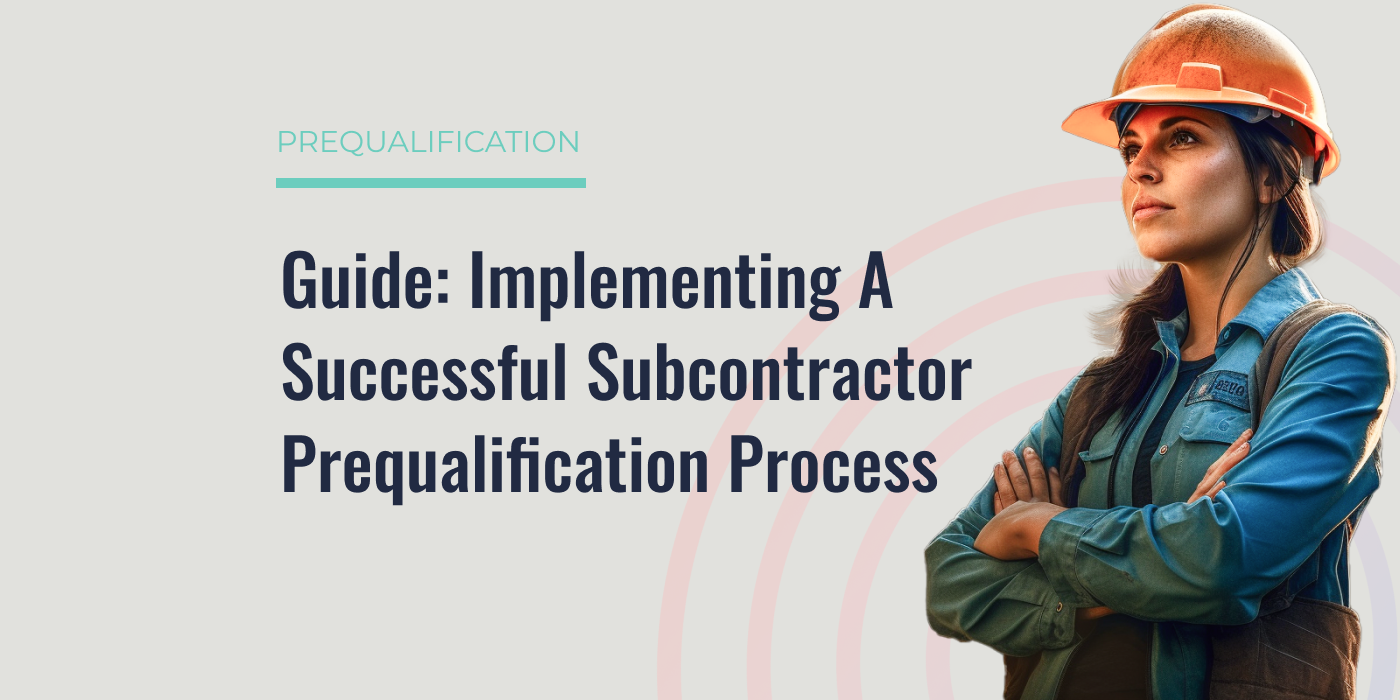The Impact of Effective Subcontractor Prequalification on Projects
Effective subcontractor prequalification plays a crucial role in the success of construction projects. Proper prequalification helps general...
2 min read
Ghida Ibrahim : May 15, 2023 11:10:52 AM

Subcontractor prequalification is essential to the success of construction projects. It helps General Contractors choose the right partners, reduce risks, and ensure projects are completed on time and within budget.
A Step-by-Step Guide to Implementing a Successful Subcontractor Prequalification Process
In this guide, we'll walk you through the steps to implementing a successful subcontractor prequalification process while taking advantage of Constrafor's Prequalification solution.
1. Establish Your Criteria and Simplify the Process
2. Create a Prequalification Form
3. Advertise the Prequalification Process
6. Select the Right Subcontractors
7. Implement a Continuous Monitoring Process
8. Review and Update Your Process Regularly
Establish Your Criteria and Simplify the Process:
Before you begin, determine the criteria that subcontractors must meet to be considered for your projects. These may include financial stability, safety records, previous experience, and compliance with insurance requirements. It's essential to outline clear expectations and requirements, such as bonding capacity, project size experience, and any certifications or licenses necessary for the project. Make it easy for subs to fill out the prequalification form, which can increase submission rates and give you access to a broader pool of qualified candidates.
Create a Prequalification Form:
Design a form that captures the necessary information to assess each subcontractor based on your criteria. Ensure that the form is user-friendly and captures all relevant information, including company details, financial information, safety statistics, and references.
Advertise the Prequalification Process:
Promote your prequalification process to potential subcontractors through your website, social media, and industry networks. Make it clear what they need to do to be considered for your projects. Share the benefits of partnering with your company and the advantages of your efficient prequalification process.
Review Submissions:
Evaluate the submitted prequalification forms to identify subcontractors that meet your criteria. Establish a scoring system or a ranking method to evaluate the submissions consistently.
Perform a Risk Assessment:
Conduct a risk assessment for each qualified subcontractor, considering factors like financial stability, safety performance, and insurance compliance. This step is crucial to ensure that you are partnering with subcontractors who can deliver the desired quality without exposing your project to unnecessary risks.
Implementing a successful subcontractor prequalification process is critical to the success of your construction projects. By following these steps and leveraging Constrafor's Prequalification Solution, you can reduce risks, save time, and ensure that you're working with the best subcontractors in the industry.
Get started now! Talk to an Expert

Effective subcontractor prequalification plays a crucial role in the success of construction projects. Proper prequalification helps general...

In the competitive world of construction, selecting the right subcontractors is crucial for project success.

Efficient subcontractor prequalification plays a vital role in risk management and project success in the construction sector.